This beauty grows in just one public place in Kent, and is an are with restricted area. They are safe there.
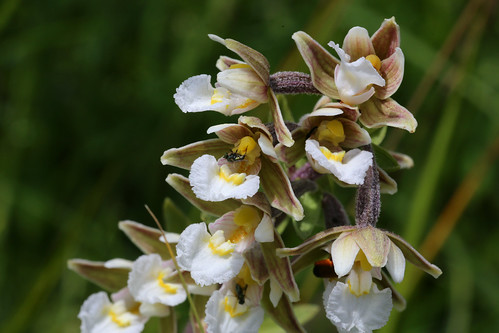 So, July 3rd, and having seen shots from friends, we go to the nature reserve to get permission to visit the site, and are told that due to ongoing work we have to be escorted, but are treated to watching some bird ringing.
So, July 3rd, and having seen shots from friends, we go to the nature reserve to get permission to visit the site, and are told that due to ongoing work we have to be escorted, but are treated to watching some bird ringing.The Helleborines are in a large area of dune slacks, any of which should be perfect for them, but they grow in about 10 square metres, crowding together, the large and small. he grow so close, to get a clear shot without standing on any. I am happy with a few general shots, then just admire the scene, as they are also surrounded by Southern Marsh and Common Spotted and a couple of Leopard Marsh.
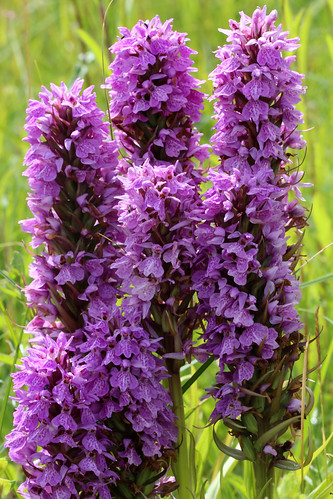 The Leopard Marsh is a variation of the Southern Marsh, but might soo be a separate species in itself; having darker flowers and hollow spots on the leaves. Sometimes. Not to be confused with the hybrids.
The Leopard Marsh is a variation of the Southern Marsh, but might soo be a separate species in itself; having darker flowers and hollow spots on the leaves. Sometimes. Not to be confused with the hybrids.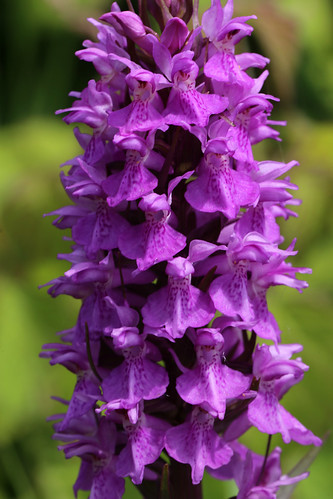 Pegwell Bay is now passing its peak, but we see so many fine spikes, just a pleasre to go to see them before they fade away for another year.
Pegwell Bay is now passing its peak, but we see so many fine spikes, just a pleasre to go to see them before they fade away for another year.Back at PGD, the Chalk Fragrants are also at their peak. I overlooked them this year, with work and the other orchids, but manage to snap a pure white variant
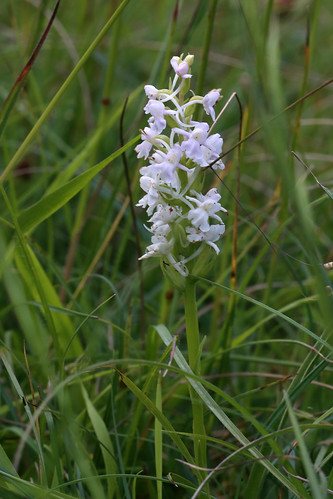 A break now until the 23rd of July, when the real stars of the late season appear; the Hellebrones. The Broad Leaved, the Green Flowered and the Violet.
A break now until the 23rd of July, when the real stars of the late season appear; the Hellebrones. The Broad Leaved, the Green Flowered and the Violet.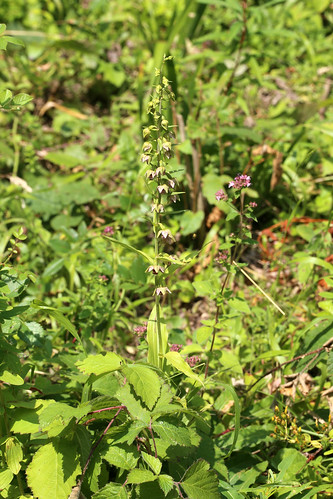 We were at Bonsai, outside the reserve, but along the road many Broad Leaved spikes can be seen, and yet only a couple with a handful of open flowers between them.
We were at Bonsai, outside the reserve, but along the road many Broad Leaved spikes can be seen, and yet only a couple with a handful of open flowers between them.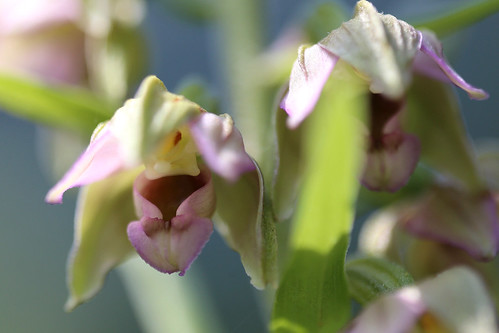 Broad Leaved can vary from light pink to so purple they look almost black.
Broad Leaved can vary from light pink to so purple they look almost black. 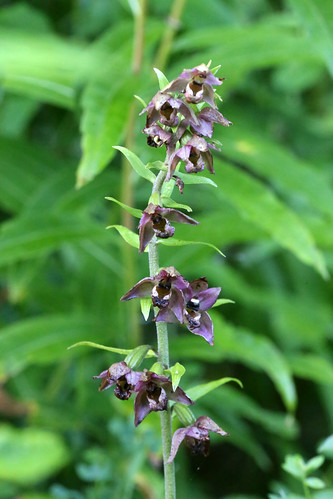 As the month turns to August, we go to The Pines to see the best site for them; sadly, due to the brush clearance, the orchids out in the meadow were very poor, but looking along the nearby path at the edge of the wood, we found dozens of spikes, many darker than I have seen before, dark chocolate brown, and densely flowered too.
As the month turns to August, we go to The Pines to see the best site for them; sadly, due to the brush clearance, the orchids out in the meadow were very poor, but looking along the nearby path at the edge of the wood, we found dozens of spikes, many darker than I have seen before, dark chocolate brown, and densely flowered too.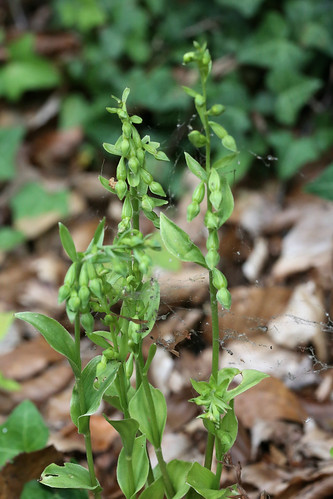 A week later on the 30th July, we are on the annual drive to north Kent to see the blandest of all Kent orchids, the Green Flowered which grow only beside a lay by on a main road. How odd it must look to see a procession of orchid addicts, laying in the gutter, getting shots of what look like weeds.
A week later on the 30th July, we are on the annual drive to north Kent to see the blandest of all Kent orchids, the Green Flowered which grow only beside a lay by on a main road. How odd it must look to see a procession of orchid addicts, laying in the gutter, getting shots of what look like weeds.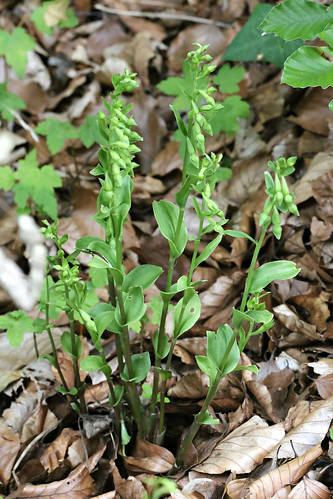 And its not like they even bother to open their lips much, preferring to pollinate themselves, but they are covered in ants as usual, after their deeply hidden nectar.
And its not like they even bother to open their lips much, preferring to pollinate themselves, but they are covered in ants as usual, after their deeply hidden nectar.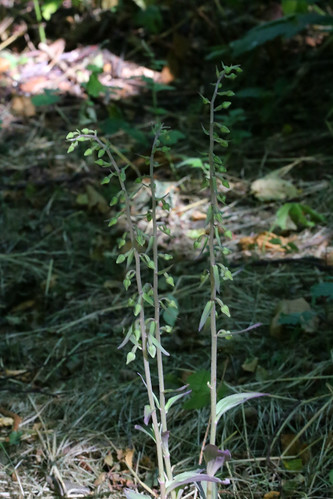 Through the second half of July had seen weekly visits to the usual site to check on the Violet Helleborines. And each time, after half an hour or more of searching, we find just two spikes, and each time little progress to seeing them open. On the 6th of August, I find a triple spiked plant, but that too is mostly yet to open, one spike having just two open flowers.
Through the second half of July had seen weekly visits to the usual site to check on the Violet Helleborines. And each time, after half an hour or more of searching, we find just two spikes, and each time little progress to seeing them open. On the 6th of August, I find a triple spiked plant, but that too is mostly yet to open, one spike having just two open flowers.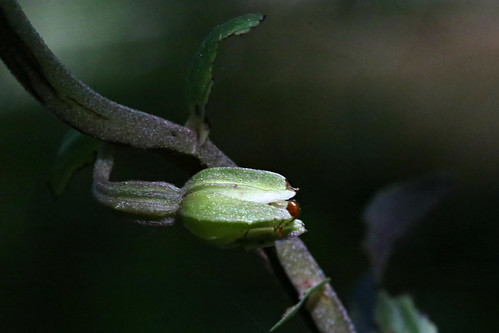 A week later and fully open flowers, but still most of the spike was closed.
A week later and fully open flowers, but still most of the spike was closed.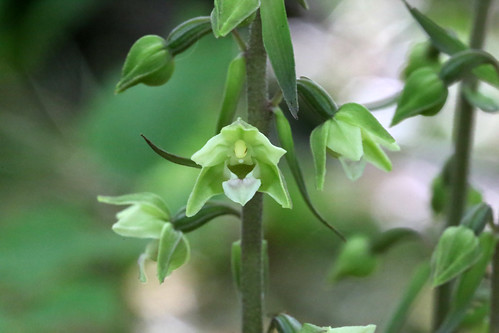 August 21st sees the appearance of the final orchid of the season, the Autumn Lady's Tresses, a few spikes around the nearby monument to us. Once again I had to write to both the local and county concils to plead for the grass not to be mowed.
August 21st sees the appearance of the final orchid of the season, the Autumn Lady's Tresses, a few spikes around the nearby monument to us. Once again I had to write to both the local and county concils to plead for the grass not to be mowed.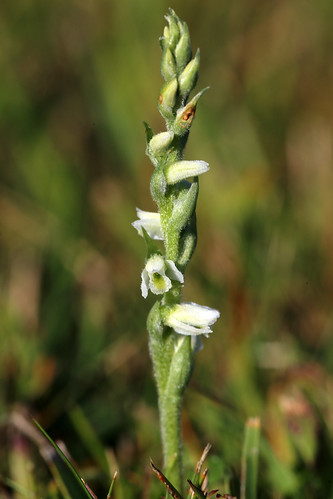 Close up, they are wonderful.
Close up, they are wonderful.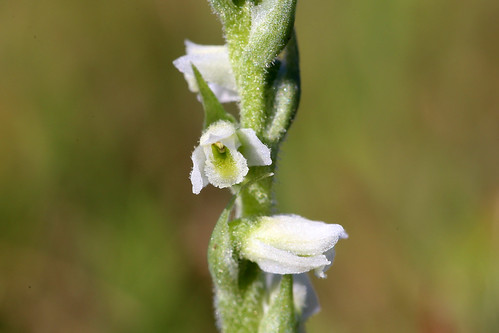 Bank holiday weekend had me hunting for Ghost Orchids (don't ask) and so wandering around a well worn path near to the Lady site at Barham, we come across three clumps of Violet Hellebroines, sadly, most had already gone over, but these are a fine group, and well worth a return visit or two.
Bank holiday weekend had me hunting for Ghost Orchids (don't ask) and so wandering around a well worn path near to the Lady site at Barham, we come across three clumps of Violet Hellebroines, sadly, most had already gone over, but these are a fine group, and well worth a return visit or two.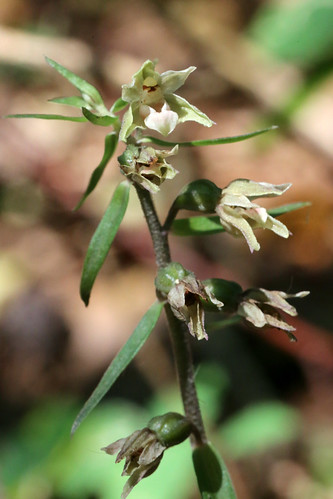
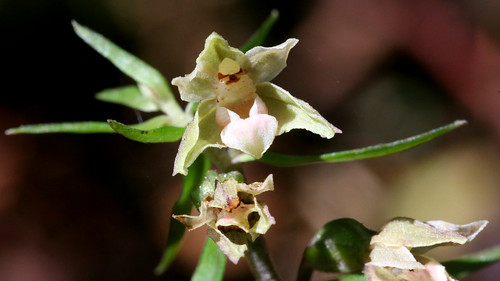
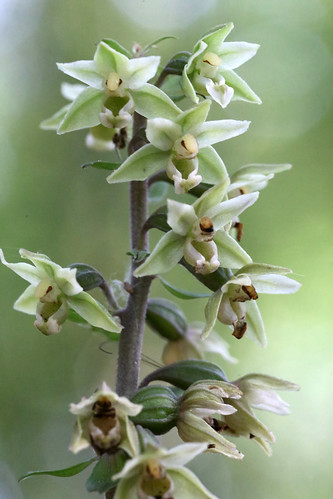 On September 8th, I was walking back from Kingsdown after another fruitless search for Long Tailed Blue butterflies, I see a clouded yellow flittering across the well kept grass, I lose sight of the butterfly, only to realise that all around me are orchids, Autumn Tresses. But in large groups and in a good size too.
On September 8th, I was walking back from Kingsdown after another fruitless search for Long Tailed Blue butterflies, I see a clouded yellow flittering across the well kept grass, I lose sight of the butterfly, only to realise that all around me are orchids, Autumn Tresses. But in large groups and in a good size too.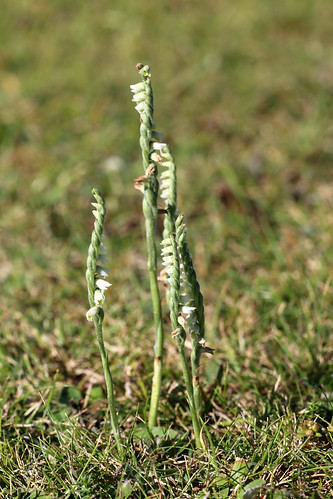
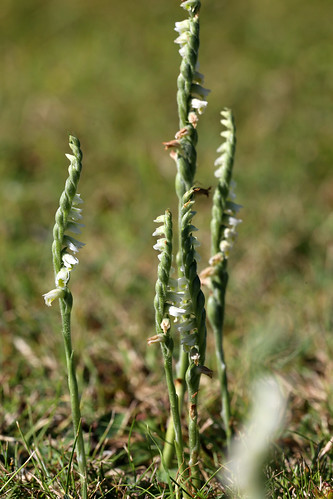 And that is the season over. 27 species out of the 28 I know where to find, only the Early Marsh eluded me this year. I did search for both the Burnt Tips and Sword Leaved Helleborines, but failed to find either this year. But maybe next. Not a bad season all in all.
And that is the season over. 27 species out of the 28 I know where to find, only the Early Marsh eluded me this year. I did search for both the Burnt Tips and Sword Leaved Helleborines, but failed to find either this year. But maybe next. Not a bad season all in all.The highlight has to be the Man x Monkey, but finding new colonies of Violets and Autumn Ladies Tresses was also good too. On top of that, most species seem to be thriving, spreading and producing more spikes. Even with more focus on our hardy orchids, they are thriving, but the battle to conserve their habitats continues and will go on.

No comments:
Post a Comment